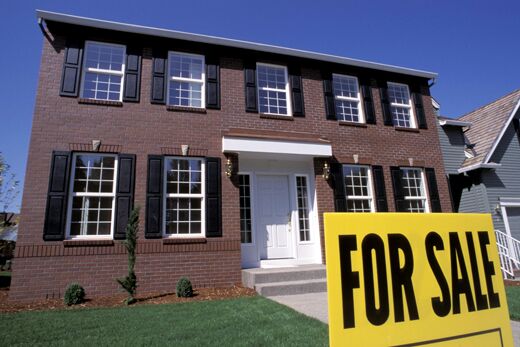
Dangers of Falling Home Prices Loom Large
The big bad wolf huffed, and puffed, and blew the house down. But the little pig didn’t care. In fact, the little pig thanked the big bad wolf, because his house had been for sale for some time, along with his neighbor’s, and 15 other homes further down the street. Now, instead of having to continually lower his asking price to attract buyers, the little pig could collect insurance—at least he would get something. Who knows how much less his house would be worth months from now? The pig’s neighbors thanked the wolf too, because now there was one less competing house for sale on the block.
Sadly, some version of this fairytale may become reality for many Americans in the not-too-distant future.
If we are to believe Morgan Stanley’s chief economist Stephen Roach, America could be looking at near-future “peak-to-trough declines” of at least 25 percent. Other analysts predict only a 20 percent drop in the hottest markets, while the National Association of Realtors head economist David Lereah, who is much more conservative, says he thinks the housing market will bottom out with a drop of 5 to 10 percent.
Is it really possible housing prices will fall? After all, not since 1933 have average home prices declined nationwide on a year-to-year basis. Analysts, including those at the Philadelphia Trumpet, have been warning about peak house prices for the last few years, yet average nationwide house prices have continued to rise. This year too, prices rose during the first two quarters. So why should we believe that change is upon us?
If the evidence of a housing bust was strong before, it is almost undeniable now.
Recently released data suggests that near-term house-price gains may be a thing of the past. Although the rate of increase between this year’s first two quarters was still positive, the rate dropped from 3.65 percent to 1.17 percent—the sharpest drop on record since 1975 when the data was first collected. The second-quarter gain in house prices was the lowest since 1999, and some areas of the nation like the northeast, west and Midwest have already seen price declines.
The New York Times reports that August statistics show median prices for existing homes fell 1.7 percent on a year-over-year basis—the first fall since 1995.
The danger, according to Jim Jubak, senior markets editor for msn Money, is that this slowdown might continue to build upon its own momentum.
When home prices are soaring, nobody wants to wait to buy a home in fear that they will have to pay more for it later. Similarly, sellers don’t mind waiting for higher bids because they think they can get more money later. Thus, “price increases beget further price increases” (Morgan Stanley, August 25).
Conversely, however, when market temperaments change and people begin to anticipate lower future prices, the incentive to make a quick purchase disappears. “Bids are drying up. Many potential buyers are simply waiting for lower prices. The word is that ‘it pays to wait,’” says economic analyst Richard Russell. Why buy a house today when you can buy it for less next month or maybe much less next year? Obviously, this type of thinking leads to rising supply and falling demand.
Rising housing supply and falling demand is what Lereah blames for the recent lackluster home prices, which he predicts will soon, on average, start falling beneath last year’s levels. Nationwide, the median price of condominiums has already dropped 0.3 percent from a year ago, the first such decline on record.
There are several fundamental factors that support a falling house-price scenario, but they all boil down to basic economics: supply and demand. Ominously, the supply/demand equation of residential real estate is now the “worst since the early 1970s,” says Paul Kasriel, the director of economic research for the Northern Trust Company.
Supply is ballooning. More homes are now on the market than ever before. According to Census Department data, the inventory of existing homes for sale has reached a record 3.86 million. Approximately 568,000 brand-new homes are for sale—also a record high. Just in the last 12 months ending in July, inventories of unsold existing homes jumped 40 percent, while the number of new homes jumped 22 percent. That means people trying to sell their home are competing against record numbers of other homes on the market.
Additionally, as of August, the numbers of new homes currently under construction are also at record numbers, notes Peter Schiff of Euro Pacific Capital. “The glut of homes on the market indicates just how overpriced real estate has become” (August 25).
“These are the classic quantity adjustments that set the stage for price destruction—the endgame of any asset bubble,” warns Roach. “Given the magnitude of the current inventory overhang, the downside … could be both deep and prolonged ….”
But the supply side of the housing market equation is not even half of the reason housing prices are in serious danger of dropping. The demand-side statistics are even more precarious. Log on to theTrumpet.com tomorrow to learn about the most probable consequences for the U.S. economy.
